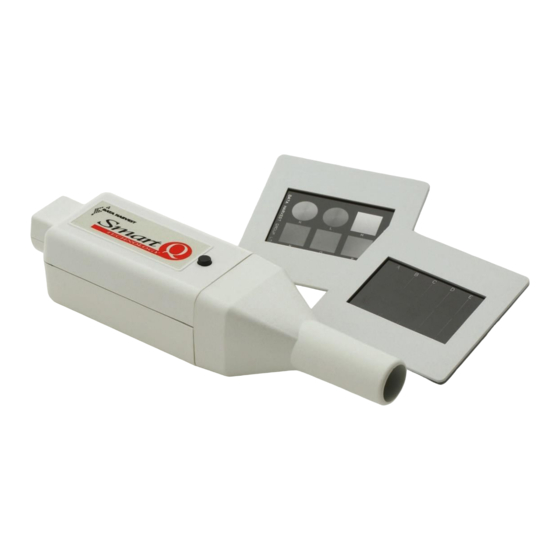Data Harvest EasySense Schnellstart-Handbuch - Seite 3
Blättern Sie online oder laden Sie pdf Schnellstart-Handbuch für Messgeräte Data Harvest EasySense herunter. Data Harvest EasySense 8 Seiten.

EASYSENSE Laser module with Optical slides
Code of practice
The EASYSENSE Laser has been designed to comply with the recommendations made by
The Use of Lasers in Schools, Colleges of Education and Further Education Establishments,
Circular No.766, SED (now SOED), 1970 with regards to:
1.
Laser diodes should only be used in laser diode modules and not as discrete devices.
2.
The radiation from the laser module must be visible.
3.
The optical power of the laser diode module should not exceed 1mw.
4.
The laser should be rated Class 1 or Class 2.
Relevant parts of this code of practice should be explained orally and given in writing to pupils
before allowing them to work with laser diode modules.
1.
Under no circumstances view (look into) the laser directly.
2.
Do not allow the laser to be directed towards another person. Clamping the laser into a
jig or clamp is good practice.
3.
The Laser module should not be switched on until it is safe to proceed, i.e. the Laser is
clamped securely in a jig and the potential path of the laser beam is not directed to an
individual or into an area where individuals may wander.
4.
Laser beams should be prevented from leaving the workbench area. An optical stop
should be used to terminate the beam. A piece of matt black card or paper will suffice. If
the beam cannot be contained in this manner then some form of barrier to prevent
accidental viewing should be considered.
5.
Whenever possible the laser beam should be restricted to a horizontal plane of 20cm
above the bench top height.
6.
A laser warning sign should be positioned in the area where lasers are being used.
7.
When the system is being set up a piece of white paper should be used as a screen to
track the whereabouts of the radiation when arranging equipment e.g. optical apparatus.
8.
Normal classroom lighting should be used whenever possible; blackout conditions
should only be used if essential to the experiment. Back reflections should be identified
and stopped.
9.
When using a fibre optic cable, a screen should be placed over the emerging end to
make the laser light visible.
Note: The lens should never be removed from the laser diode module. If the lens becomes
damaged the module should be discarded or returned to Data Harvest for repair. Removal of
the lens will raise the power output of the laser.
Reference:
1. The Use of Lasers in Schools, Colleges of Education and Further Education
Establishments, Circular No.766, SED (now SOED), 1970
2. BS EN 60825: 1992 Radiation safety of laser products, equipment classification,
requirements and user's guide, British Standards Institution,
Information
Neither the EASYSENSE unit nor software will identify the Laser module when it's
connected.
The Laser will not operate if the EASYSENSE unit is not powered. If the unit goes into
'sleep' mode' press a button to 'wake it up' and therefore power the Laser. When the
unit is re-awakened the Laser will need to be switched back on by pressing the small
button switch on the module housing.
The Laser is not suitable for use when data is being collected remote from the
computer e.g. in EasyLog mode, for more than six minutes. After six minutes the
3
DS058
